Products
Products from October 2010.
UV–vis spectrophotometers
The Evolution 200 UV–vis spectrophotometers from Thermo Fisher Scientific feature the company's INSIGHT software with customized scripting capabilities. Three models are available for applications ranging from standard quantitative analysis to research life science assays. According to the company, the instruments are designed for routine QA/QC analyses in the life science, food and beverage, and material science industries and for fast data collection rates for kinetics measurements (up to 100 data points/s). The instruments are available in both local and computer-controlled configurations. Thermo Fisher Scientific Inc., Madison, WI;
www.thermoscientific.com/evo200
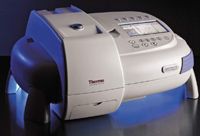
UV–Raman spectrometer
The McPherson Commander f/4.8 triple spectrometer is designed for UV and wide-wavelength-range Raman applications. The spectrometer has continuously tunable wavelength positioning for use with tunable lasers, to seek resonance, or at deep UV wavelengths where filters are not available. Purge fittings are provided for experiments that approach the oxygen absorption envelope. According to the company, the configuration of slit width, apertures, and gratings are user-controlled. A single-stage bypass reportedly allows dedicated use of the spectrograph. McPherson, Inc., Chelmsford, MA;
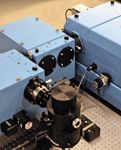
NIR spectrometer
The Sol2.2A NIR spectrometer from B&W Tek provides a spectral range out to 2.2 µm. The spectrometer reportedly features a built-in autozero function. The instrument is designed with four levels of gain for use in low light level NIR detection. According to the company, the spectrometer is equipped with a built-in three-stage cooler that allows for integration by providing +5 V DC power. B&W Tek, Inc., Newark, DE;
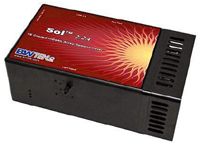
Cryogenic grinder
SPEX SamplePrep's model 6970 Enclosed Freezer/Mill includes a totally enclosed liquid nitrogen autofill system with external loading of sample vials. The instrument's dual grinding chambers, which are positioned in the liquid nitrogen reservoir, are accessed through external gates. The grinder is designed with magnetically powered impactors and is controlled by a color touch screen interface that can store as many as 10 programs. Users reportedly can control both grinding chambers for independent operation with different protocols. SPEX SamplePrep LLC, Metuchen, NJ;
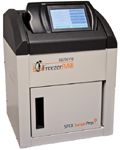
Spectroscopy catalog
A 2010–2011 mini-catalog from International Crystal Laboratories shows products using in IR, UV, and visible spectroscopy. Products listed include optics, IR cards, liquid cells, gas cells, solid sampling accessories, film makers, laboratory grinding mills, KBr and XRF dies, NIST-traceable calibration films, and cuvettes. A PDF version of the catalog is also available at the company's website. International Crystal Laboratories, Garfield, NJ;
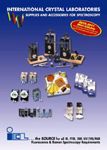
UV–vis–NIR brochure
A full-color brochure from Shimadzu Scientific Instruments describes the company's UV–vis–NIR spectrophotometers. The brochure, titled "Measurement of Transmission and Reflectance of PV Materials and Cells," explains the role of the company's SolidSpec-3700 and UV-3600 instruments in the manufacture of solar cell materials, cells, and modules. According to the brochure, the instruments reduce measurement workload and achieve more efficient nondestructive analysis of PV materials. Shimadzu Scientific Instruments, Inc., Columbia, MD;

EDXRF detectors
Moxtek's XPIN detectors are designed for use in benchtop and handheld energy dispersive X-ray fluorescence (EDXRF) instrumentation. The detectors reportedly are optimized to provide maximized resolution, count rate, energy absorption, and peak-to-peak background for various industrial and scientific applications. Moxtek, Inc.,Orem, UT;

LC–MS system
The amaZon Powerpack LC–MS system from Bruker Daltonics is designed for laboratories involved with detailed structural analysis of various molecules. The system combines the company's amaZon SL ion-trap mass spectrometer and a Dionex Ultimate 3000 UHPLC system. According to the company, features include automated, intuitive software; data acquisition at isotopic resolution in MS and MS-MS modes for use with UHPLC; on-the-fly polarity switching; reproducible fragmentation for unknown compound identification; and low maintenance requirements. Bruker Daltonics, Billerica, MA;
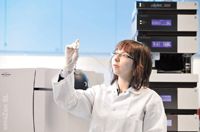
FT-IR spectrometer
Thermo Fisher Scientific's Nicolet iS5 FT-IR spectrometer is designed for product assurance testing, basic troubleshooting, and chemistry teaching. The small-footprint spectrometer reportedly provides performance comparable to full-size spectrometers. The instrument reportedly is powered by the company's OMNIC software and includes an open-architecture sample compartment that accepts various sampling accessories. According to the company, the spectrometer can be used for raw materials, impurities, and mixtures identification. Thermo Fisher Scientific Inc., Madison, WI;
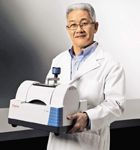
Cosine correctors
The CC-UV/VIS/NIR-8MM and CC-UV/VIS/NIR-5.0 cosine correctors from Avantes are designed for solar measurement applications. The former instrument has an 8-mm active area. The latter instrument has a 5° angular field of view and is normally affixed to a sun tracker system. Solar monitoring can be achieved using the company's pyranometer, pyrheliometer, or spectroradiometer instruments. Avantes, Inc., Broomfield, CO;
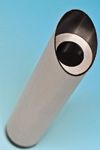
UV–vis spectrophotometer
The model 8453 UV–vis spectrophotometer from Agilent Technologies uses a photodiode-array detector to make measurements throughout the 190–1100 nm wavelength range. According to the company, measurements are made in less than 1 s. The system reportedly is coupled with the company's UV-Visible ChemStation software for data analysis, data archival, and compliance with pharmacopoeia requirements and good laboratory practices. Agilent Technologies, Inc., Santa Clara, CA;
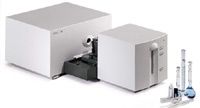
Spectrometer
StellarNet's DUAL-DSR spectrometer systems integrate two detector arrays to cover the 200–1700 nm wavelength range simultaneously. The fiber-optically coupled instruments provide absolute measurements in units of watts/m2, lumens/m2, radiant or luminous flux, and others. Each system is configured with a BLACK-Comet spectrometer that covers the 200–1080 nm range, and the remainder of the spectrum is continued with a RED-Wave NIR spectrometer that includes a TEC cooled InGaAs detector. The NIR spectrometer is available with 512 or 1024 pixels. The systems can be battery powered for field use. Applications include direct solar monitoring, solar simulator classification and analysis, crop reflectometry, and biological and environmental studies. StellarNet, Inc., Tampa, FL;
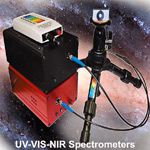
UV–vis–NIR miniature spectrometer
The VS7000 UV–vis–NIR miniature spectrometer from HORIBA Jobin Yvon is a preconfigured, low stray light system that includes an uncooled back-illuminated CCD and USB-2 integrated electronics. The spectrometer is designed for OEM low light, high SNR requirement applications. The instrument also includes a selection of slit widths, integrated OSF, and three spectral range selections: 200–860, 380–750, and 200–1050 nm. HORIBA Jobin Yvon, Inc., Edison, NJ;
www.horiba.com/scientific/VS7000
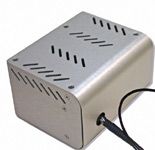
Website
SPEX CertiPrep's website is designed to enable users to purchase organic and inorganic certified reference materials. The site includes a search function, a custom standard request form, and live chat for access to the company's support staff. Products include certified reference materials for AA, ICP, ICP-MS, and IC analytical instrumentation. SPEX CertiPrep,Metuchen, NJ;

FT-IR spectroelectrochemical accessory
An FT-IR spectroelectrochemical accessory from PIKE Technologies is designed for in-situ studies of redox processes and of electron transfer mechanisms. The accessory's spectroelectrochemical cell is configured on the company's variable-angle specular reflectance/ATR VeeMAX platform. Experiments reportedly can be performed in either ATR or specular reflectance sampling mode. According to the company, the angle of incidence can be varied to optimize spectral results, and the ATR crystal and specular reflectance window can be removed from the cell mount to change the crystal or window type or coat the ATR crystal. PIKE Technologies, Inc., Madison, WI;
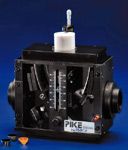
Visible handheld spectrometer
The i-LAB handheld analyzing spectrometer from Microptic Technologies is designed to allow users to record and compare spectral measurements of liquids and solids throughout the 400–700 nm wavelength range. The portable, 7.4-oz instrument includes the company's i-LAB Spectrum PC software, which reportedly enables users to build custom measurements and download results to a PC for further analysis. Applications include water quality testing, agricultural monitoring, fuel dye measurements, process plant QA/QC and sample testing, laboratory data collection and analysis, and college chemistry laboratory and environmental science research. Various sample measurement adaptors are available. Microptix Technologies, LLC, Wilton, ME;
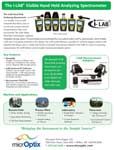
Metals analysis system
Thermo Fisher Scientific's metals analysis system combines the ARL OPTIM'X WDXRF slag analyzer with the ARL 3460 Advantage OES metals analyzer. The system is designed for use by foundries and metal processing companies for analysis of slags and alloys by WDXRF and solid metals by OES. According to the company, the slag analyzer allows quick sample preparation and fast analysis of common oxides as well as fluorine. Slags can be analyzed both as directly cast slags and as pressed pellets after grinding and pelletization. Both instruments reportedly are driven by Windows 7–based OXSAS analytical software. Thermo Fisher Scientific, Ecublens, Switzerland;
www.thermoscientific.com/metalsolution
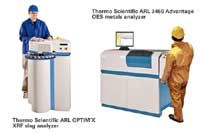
ICP-MS system
The NexION 300 ICP-MS system from PerkinElmer is designed for parts-per-trillion detection of trace elements for diverse applications. According to the company, the system reduces the need for daily user maintenance and cleaning. The instrument reportedly provides three modes of interference removal: Standard, Collision, and Reaction. The modes are designed for simple, routine analyses, semiquantitative analyses, and analyses of difficult elements and matrices, respectively. PerkinElmer, Inc., Waltham, MA;
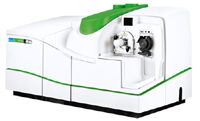
Website
NSG Precision Cells has launched an e-commerce website for spectroscopy cuvettes and other precise quartz optical components. The website provides data, tips on taking care of cuvettes, and an option to order cuvettes online. The company's products include quartz and glass cuvettes for spectroscopy, flow channel cells, microfluidic chips, and other quartz optical components. NSG Precision Cells, Farmingdale, NY;
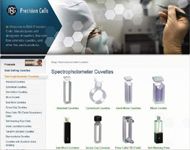
XRF inorganic elemental analyzer
EDAX's Orbis micro-XRF inorganic elemental analyzer is designed to perform nondestructive measurements that require minimal sample preparation and provide improved sensitivity over SEM and EDS methods. The analyzer includes a motorized turret for coaxial sample view and X-ray analysis. Primary beam filters can be used with X-ray optics for micrometer to millimeter spot elemental analyses. Applications include forensics, materials analysis, failure analysis, and elemental imaging. EDAX, Inc., Mahwah, NJ;
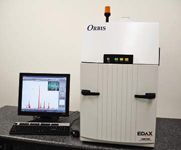
Electron generator arrays
ELECTROGEN electron generator arrays from PHOTONIS USA are designed to be a "cold" electron source that provides a large dense electron flux and requires no warm-up time. The arrays reportedely consist of millions of precision glass tubes fused together to create a mechanically rigid structure. According to the company, the arrays can be used as the electron source in electron impact ionization sources for beam line monitoring, display devices, electron scrub sources, wafer discharge, and ion and electron impact ionization. The arrays are available in sizes ranging from 3 mm to 150 mm. PHOTONIS USA, Sturbridge, MA;
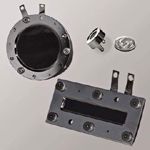
Silicon drift detector
The Super SDD silicon drift detector from Amptek is designed for high count rate applications in handheld systems and bench-top analyzers. The X-ray detector, preamplifier, and cooler system reportedly are thermoelectrically cooled. The input FET and a feedback circuit are mounted on the detector's two-stage cooler and are kept at approximately -55 °C. According to the company, the 25 mm2 × 500 µm detector provides an FWHM resolution of 127 eV, a peaking time of 11.2 µs, and a peak-to-background ratio of 8000. Amptek, Inc.,Bedford, MA;

FT-NIR analyzer
The MB3600-CH30 FT-NIR analyzer from ABB is designed for quick biodiesel sample analysis for production monitoring, optimization, and product quality assessment. The analyzer provides a determination of mono-, di-, and triglyceride content; residual methanol; methyl ester %; and other quality parameters in biodiesel for finished product screening and endpoint determination in biodiesel reactors. ABB Ltd., Zurich, Switzerland;
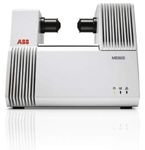
Raman microscopes
The alpha300 microscopes from WITec are designed for Raman analyses. The alpha300 M microscope is intended for single-point spectrum acquisitions and depth profiling. The alpha300 M+ includes a stepper motor and reportedly allows mapping experiments and large-area investigations. The stepper motor also can be attached to the alpha300 R imaging system. The alpha300 ML features high-resolution confocal Raman mapping. Upgrades and combinations with atomic force or scanning near-field optical microscopy are available. WITec GmbH, Ulm, Germany;
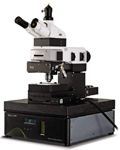
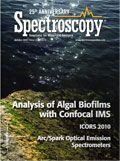
Best of the Week: AI and IoT for Pollution Monitoring, High Speed Laser MS
April 25th 2025Top articles published this week include a preview of our upcoming content series for National Space Day, a news story about air quality monitoring, and an announcement from Metrohm about their new Midwest office.
LIBS Illuminates the Hidden Health Risks of Indoor Welding and Soldering
April 23rd 2025A new dual-spectroscopy approach reveals real-time pollution threats in indoor workspaces. Chinese researchers have pioneered the use of laser-induced breakdown spectroscopy (LIBS) and aerosol mass spectrometry to uncover and monitor harmful heavy metal and dust emissions from soldering and welding in real-time. These complementary tools offer a fast, accurate means to evaluate air quality threats in industrial and indoor environments—where people spend most of their time.